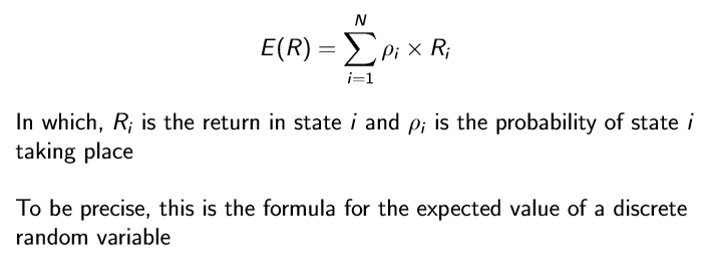FMI Lec2 determinants of interest rates
1/23
There's no tags or description
Looks like no tags are added yet.
Name | Mastery | Learn | Test | Matching | Spaced |
|---|
No study sessions yet.
24 Terms
4 determinants of financial asset demand
wealth ; not income
expected return
risk
liquidity; ease and speed to convert to cash
wealth’s impact on financial assets
financial assets are normal goods
as wealth increases, demand for financial assets increases
expected returns
normal
increase in er increases demand
the average return across all states of nature
the Er of a portfolio a and b is equal to the sum of their individual er

risk-return trade off
high risk = high er, vice versa
Risk
negative correlation; increase in risk reduces demand
std dev
sum all probability x squared deviation, then sqrt

liquidity
normal— increase in liquidity increases demand
eg real estate is not liquid , stocks and bonds are
is there really one interest rate for the entire economy
no, but they will move together, so move forward like they do
with excess supply of bonds, price will:
drop
with excess demand, bond prices will:
rise
draw s and d curves
demand is negative
supply is positive
price on y axis
quantity on x axis
as supply of bonds increases, expected return will:
lower
market equilibrium
number of people who want to buy = number of people willing to sell at a given price
bonds prices and interest rates move in ___ directions
opposite
If expected interest rates E(i t+1) rise, what happens to demand?
demand shifts backwards, dropping prices and raising rates.
investors don’t want to buy bonds today. they expect prices to fall.
1 year bond YTM
FV-P / P
real interest rate
nominal - pi^E
pi^E is expected inflation
why does expected inflation causedemand to fall
because the real return falls.
rising liquidity of bonds has what impact on demand
raises demand, shift to right
If profitability of investment rises, what happens to supply
supply rises
if expected inflation rises, what happens to supply
raises, because the real cost of borrowing has decreased. They will owe same nominal amount of money, but real value will be diminished.
If government deficit increases, what effect on supply?
supply increases to right, as government requires more refinancing.
total effect of expected inflation on supply curve
causes demand to fall (to the left) because returns will be worth less
causes supply to increase (to the right) because real cost of borrowing decreases.
prices fall and interest rates rise.
Fisher effect
due to market equilibrium, nominal interest rates will rise with inflation rates.
Increase in wealth effect [business cycle expansion] on supply and demand curves
both move to the right (but the demand curve less so)
demand: financial assets are normal goods
supply: more profitable investments, so investment rises
prices fall and rates rise (where demand increases less than supply)